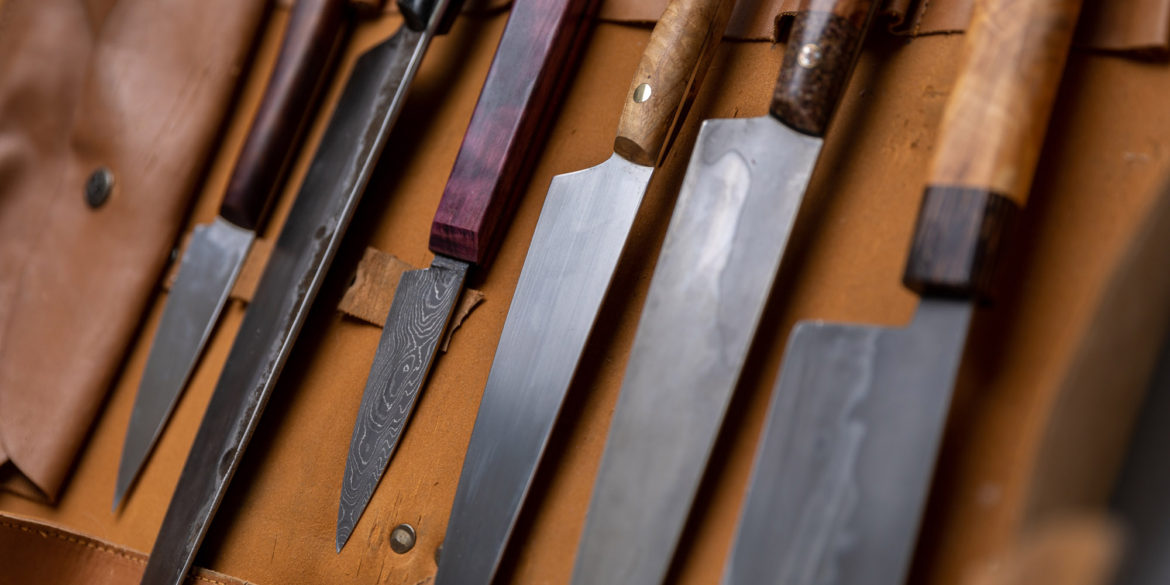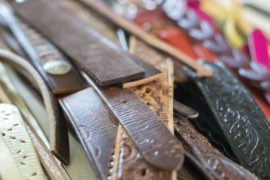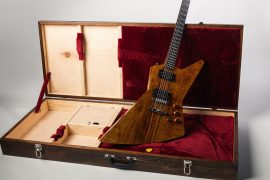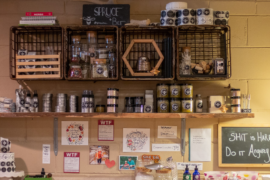From studying and practicing evolutionary and molecular biology to working as a self-employed blade smith, one thing has remained constant for Aric Geesaman- his love for knives. What started as a challenge to learn the ins and outs of knife sharpening transformed into Ash Blæds, Geesaman’s own handmade knife business. Based out of McCordsville, Indiana, Geesaman creates knives with a personal focus on high end kitchen knives.
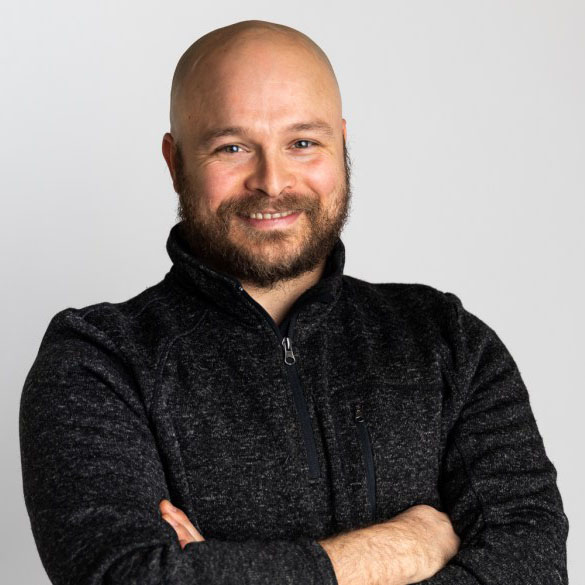
How long have you been making knives?
It’s been about five years since I started it out as just a hobby. Dedicated, full-time I’ve been doing it for two to three.
Retail locations where people can find your product?
No where currently, but stay tuned. I have inventory knives that are all up for grabs on my website but additionally people can contact me to do any custom orders that they wish. Go to the website, send me an email, we’ll go from there.
What piqued your initial interest in designing your product(s)?
As a personal challenge, I wanted to learn how to hand-sharpen my own knives. I cook a lot, and what are you going to do with a dull knife? Once I got pretty good at that, friends and family started saying, “Well, you can sharpen ours too, ours are dull,” and that’s a handy thing to have- an actually sharp kitchen knife. After a couple of years of sharpening every knife I could get my hands on, it kept creeping up in my head that I could probably make one of these. So I went and got some books from the library, bought a couple of books and then took to the internet and between all of those things, I got a general idea of how it would go.
What principles do you use when designing?
Over the million years that the knife has evolved as a human tool, it has evolved into a neat little envelope. There are a lot of things you can do in that envelope, but there are some limitations. In order to make a good knife, certain requirements have to be met. The starting point is to understand that basis. There can be different shapes and sizes and amounts of visual mass on one side of the knife on the blade side that I think has to be balanced on the handle side. It comes down to balancing the individual material components.
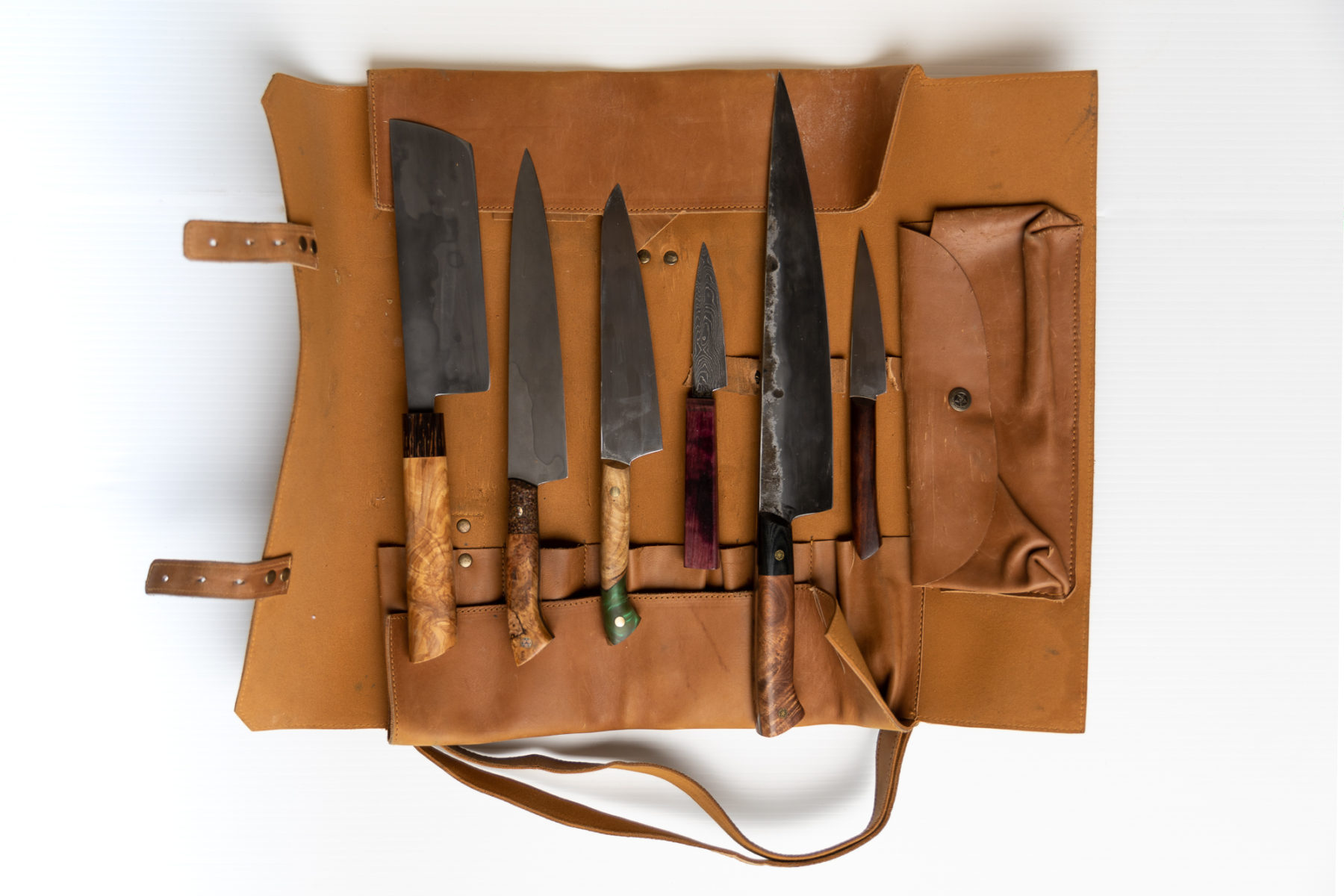 Who and/or what influences your design style? How would you describe your design aesthetics and values?
Who and/or what influences your design style? How would you describe your design aesthetics and values?
I get a lot of influence from other makers and other art. I’m always kind of watching people who are painting or sculpting and using that to inform my sense of aesthetic balance.
What comes first for you, the design materials or the design concept?
I have to design them together in order to maximize the potential for that tool. For example, there are some steels that are going to be better for a certain kind of knife and if you’re not thinking about that and just grab that steel, you may really be short changing yourself and may be sacrificing some functionality. I find my best efforts emerge when I put those two things together.
Could you describe the process of creating a piece?
A lot start as a pencil sketch in a notebook that I ink and then I watercolor. It gives me the first sense of what those physical and color balances will be. It’s constantly checking in – not only on the process to make sure the tool is going to function in the way that it needs to, but also visually is this meeting my expectations?
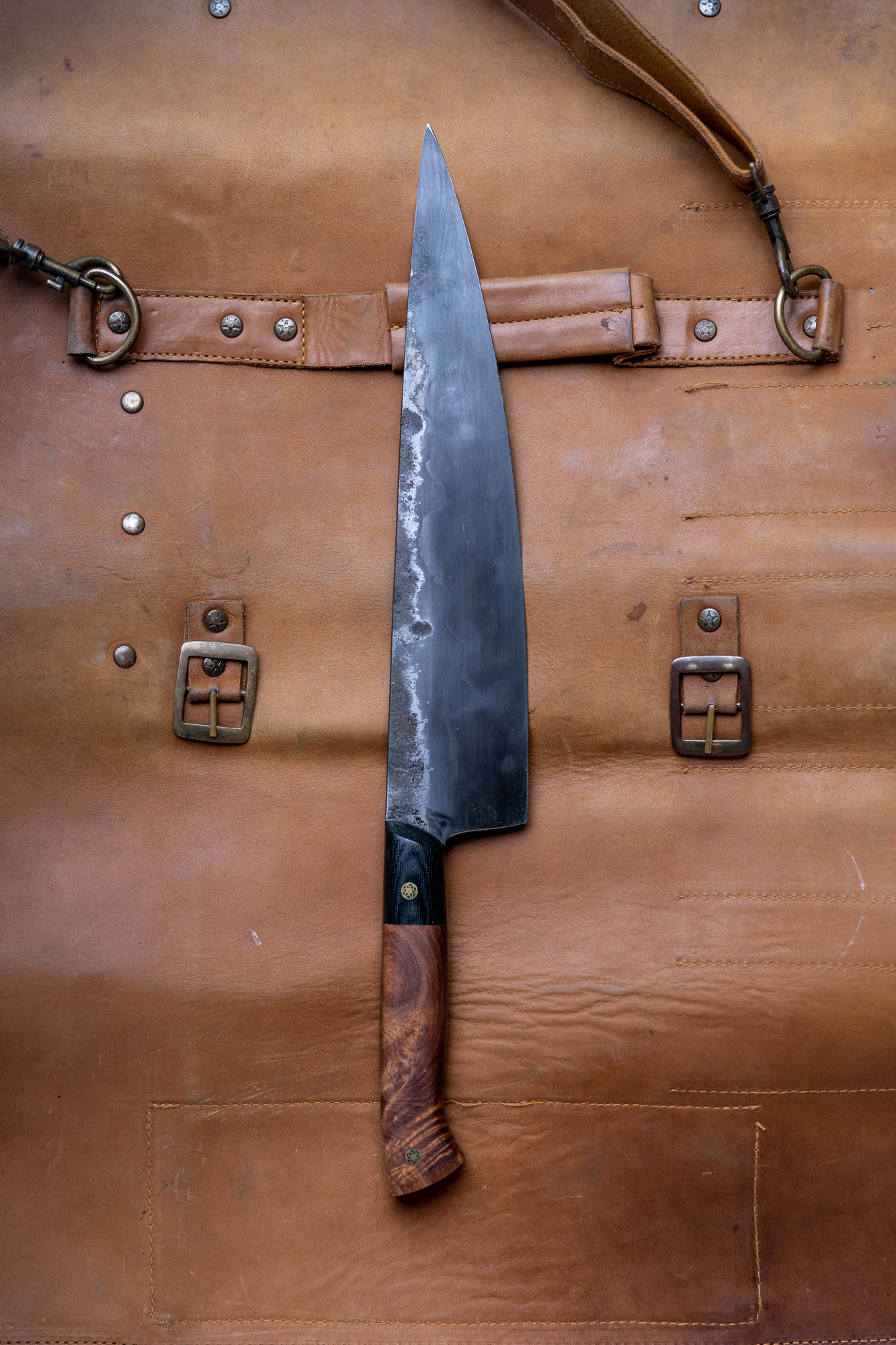
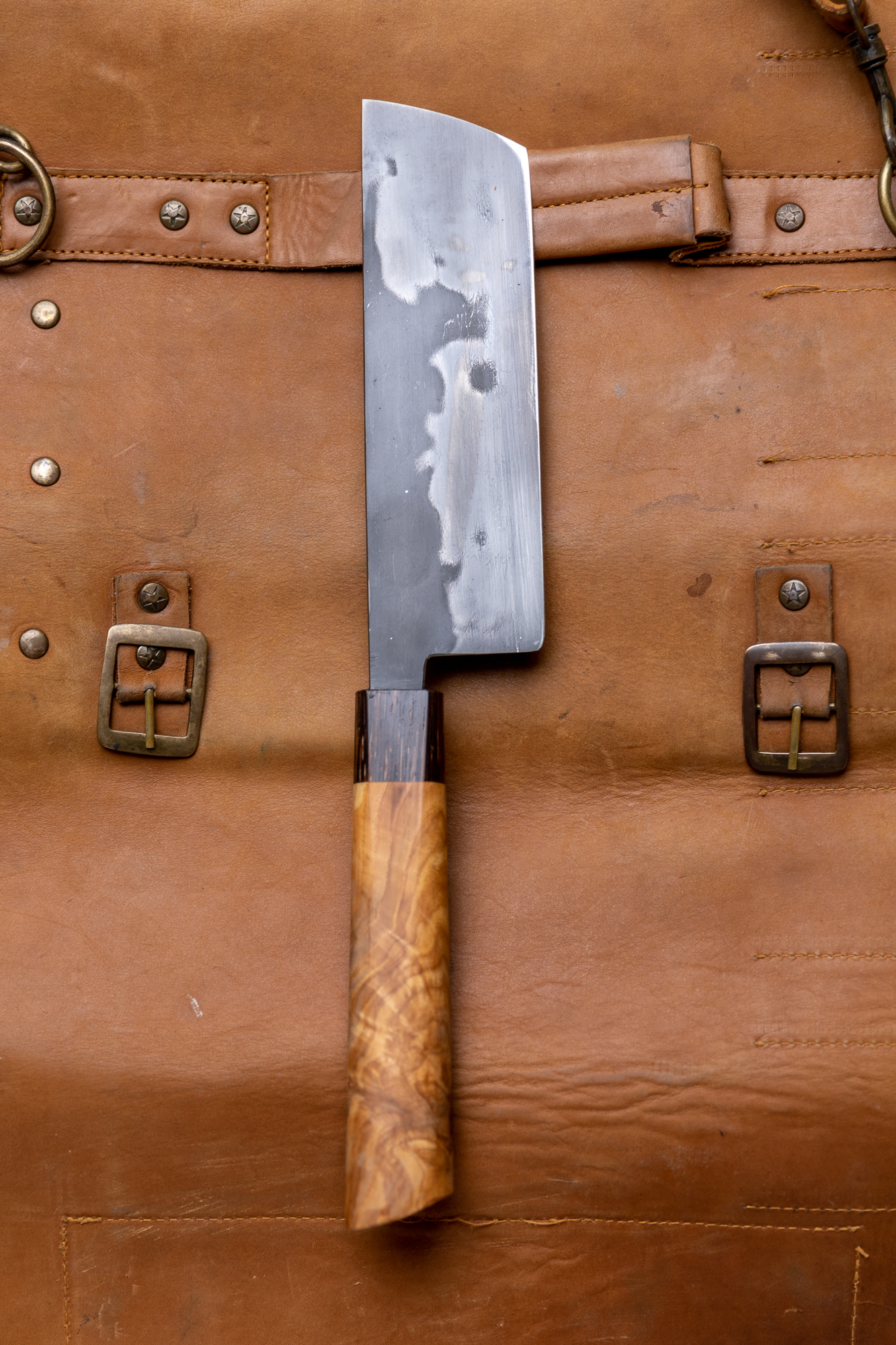
What is your favorite tool, and why?
There’s one particular hammer I have- I have like, eight particular forging hammers, which were all fine, until I got this one- and for whatever reason, it is the perfect balance for the way that I use a hammer. I know it’s not always the right hammer, but I am always itching to use that hammer.
Describe a piece you’ve created that you are most proud of. What was special about it?
I have a lot of pieces that I’m proud of, often times for the same reason, because I could help someone preserve a piece of their legacy that really means a lot to them.
Describe the commissioning process. What are the best and worst aspects about doing commissions?
I don’t ever want to build something that I think is sacrificing the function of the tool, maybe the balance of the tool. Occasionally I will get, at the start of a commission, an idea from someone that is not going to balance well and is not going to be a great tool. Commissions come with unique challenges every time. The best part is the ability to really personalize something to someone.
What advice you would give to aspiring designers like yourself?
No one will know we exist if we don’t put ourselves in front of people and if we don’t put our work out there for criticism. That drive to get your work out there is important. The biggest thing I can recommend is to be patient.
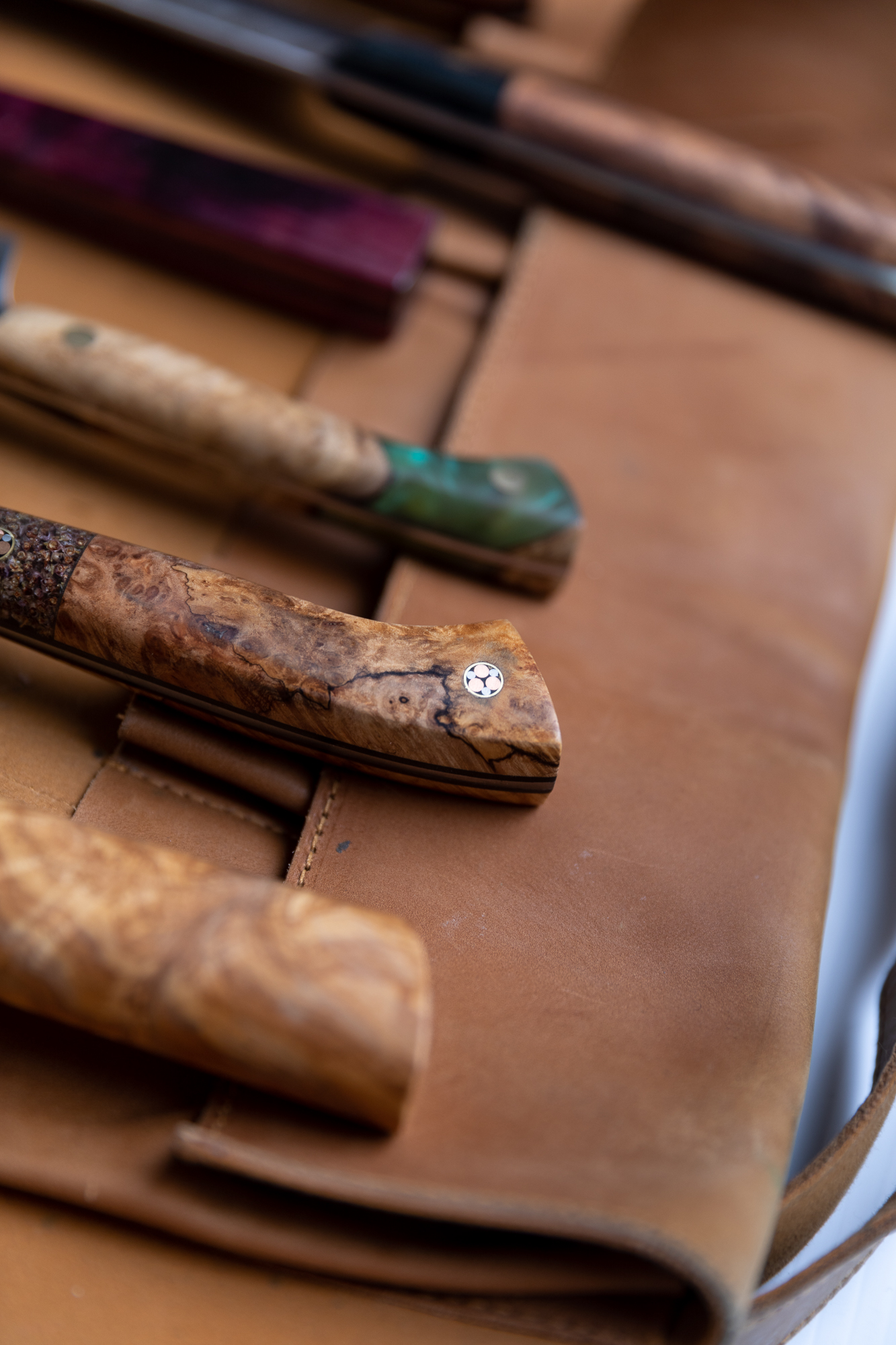
What is one thing that the creative/design community can do in Indianapolis to help grow an audience for custom or hand-crafted work?
We can all do as much as we can to support each other, not everyone can support financially, but that’s not the only way to support artisans. Speaking out on behalf of artisans, trying to find places where they can show off their work and trying to find venues where they can educate people on the things that they can do. And as a community, being open to checking out artisans and giving them honest feedback.
Dream commission/client?
I guess we all dream of someone who has a lot of visibility and influence saying “I really want what you make, and I want to tell other people how amazing it is” but that’s not really what I work for. I just work to make the people around me happy. My dream is to build myself and our community of artisans up and create something that is sought after and seen as worth having and passing on to generations of people.
What makes your work different from anyone else’s?
I’m not always consciously aware that an aesthetic is developing that is recognizable by other people, but when it is recognized, I need to keep going with that and developing that. I couldn’t put my finger on what it is, but it is just my own personal sense of flow, balance and approach from beginning to end. As the process goes through, you leave these little artifacts of who you are as an artisan and what your process is that are recognizable to others. Or maybe not. But they’re there, and as you do more, they magnify. Some people have a ‘thing’ that they do that is a thread which purposely runs through all of their work. I don’t have that conscious thread because my thought process is always evolving and I’m making those minor adjustments to my own feeling of balance.
What’s your most rewarding memory in your business?
I don’t know that I have an individual memory that really stands out because this has been a slow, methodical, building exercise for me. None of this came to me intuitively, so every little milestone is exciting.
Is there any maker you would recommend to be highlighted for this series?
Sculptor and wood worker Alexandra Geske, Ryan Vanhoy of Vanhoy Pottery and Tara of Beatrice Waker Books.

